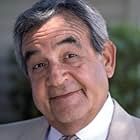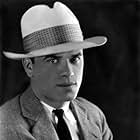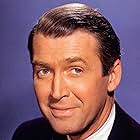Tom Bosley hosts a documentary the looks into the story behind how one of cinema's greatest films It's A Wonderful Life was made.Tom Bosley hosts a documentary the looks into the story behind how one of cinema's greatest films It's A Wonderful Life was made.Tom Bosley hosts a documentary the looks into the story behind how one of cinema's greatest films It's A Wonderful Life was made.
Photos
- Director
- Writer
- All cast & crew
- Production, box office & more at IMDbPro
Storyline
Did you know
- TriviaThis documentary is featured on the Republic Pictures LaserDisc and DVD for It's a Wonderful Life (1946).
- ConnectionsFeatures It's a Wonderful Life (1946)
Featured review
There's no plot to give away in a documentary short such as this. But, I'll give some information from this featurette that movie fans may find of interest who otherwise can't find this short to watch
As a movie short and documentary, "The Making of 'It's a Wonderful Life'" is far better than most films of this type. It packs a lot of interesting data about the set and shooting of the classic 1946 Christmas holiday film. Tom Bosley narrates this 23-minute short. He guides viewers through the unlikely origin of this film, to its screenplay, the selection of cast, and development and filming.
Along the way, we see interview snippets with Frank Capra (director of the film), James Stewart (George Bailey in the film) and Sheldon Leonard (Nick in the film). And, this featurette uses film clips from the movie. Apparently, all of the cast and crew found the atmosphere unusually wonderful in working on this movie. One thing that sets this documentary short a couple notches above the norm is the amount of background details about the movie, including behind the scenes shots of the production.
The movie began as a Christmas Card in 1943. Writer Philip Van Daren Stern wrote a short story that year, "The Greatest Gift." He printed it as a 22-page Christmas card that he sent to 200 family members and friends. The next year he published it as a book, and RKO Pictures bought the film rights for $10,000. The studio had Cary Grant in mind to play George Bailey. Several screenwriters wrote adaptations of the story, but none of them clicked with RKO, and the film languished for a year. Then in 1945, Frank Capra read the story and bought the movie rights from RKO for $10,000. The deal included the three screenplay adaptations. Capra hired two of the top screenwriters of the day, Frances Goodrich and Albert Hackett. They took parts of the three screenplays and added some new aspects of their own and of Capra's. The result was "It's a Wonderful Life."
One of the major changes in the story that Capra contributed was the inclusion of Mr. Potter, as the nemesis of the hero's family (and the whole town, in the eyes of George Bailey). Capra had the perfect character in mind for Potter, and one can't imagine how this story would have developed without Lionel Barrymore in the role of Mr. Potter. There was a Mr. Potter in Stern's original story, but he was owner of a photo studio.
Capra had directed two previous films with James Stewart in the lead. "You Can't Take It With You" of 1938 and "Mr. Smith Goes to Washington" of 1939 were both big hits. Stewart was his choice from the start for the role of George Bailey. But, that was the only role that Capra was set on firmly. This documentary gives details about the selections for other key roles – Mary Hatch (Donna Reed), Uncle Billy (Thomas Mitchell), and Clarence (Henry Travers). Capra filled the rest of a sizable cast with some of the best supporting actors of the day.
This was the first movie that Stewart made in more than five years -- since before the start of World War II. He did, however, star in a 1942 recruiting short film for the Army Air Forces.
Although RKO had sold the film rights to Capra, the move was made on the RKO ranch near Encino, CA. And, RKO distributed the film for Capra's Liberty Films that produced it.
The movie's location of Bedford Falls was one of the largest sets ever built for an American movie. The main street was 300 yards long in three city blocks. It had a tree-lined center parkway. The set had 75 stores and buildings, including a bank with a marble front, a post office and a library. It had 20 full-grown transplanted oak trees.
Movie snow in those days was usually made of corn flakes painted white. But, Bosley points out that they couldn't use sound then because of the crunching noise. So, the crew for this film found news ways of making the snow. To cover the whole town in the set took 3,000 tons of shaved ice, 300 tons of gypsum, 300 tons of plaster and 6,000 gallons of a special mixture of Foamite, soap and water. And, ironically, the freezing scenes were shot during a record heat wave in the summer of 1946.
Bosley says that the film crew won an Oscar for their new development sin snow making. He didn't say when that was, but it wasn't in the Academy Awards for 1946, in which "It's a Wonderful Life" received five nominations but no wins.
Apparently, when the film came out, some reviewers thought the early scene with the moving dance floor was some sort of gimmickry. But, Bosley says it was a real action scene shot in Beverly Hills High School, which still has the movable gym floor over a swimming pool.
As a movie short and documentary, "The Making of 'It's a Wonderful Life'" is far better than most films of this type. It packs a lot of interesting data about the set and shooting of the classic 1946 Christmas holiday film. Tom Bosley narrates this 23-minute short. He guides viewers through the unlikely origin of this film, to its screenplay, the selection of cast, and development and filming.
Along the way, we see interview snippets with Frank Capra (director of the film), James Stewart (George Bailey in the film) and Sheldon Leonard (Nick in the film). And, this featurette uses film clips from the movie. Apparently, all of the cast and crew found the atmosphere unusually wonderful in working on this movie. One thing that sets this documentary short a couple notches above the norm is the amount of background details about the movie, including behind the scenes shots of the production.
The movie began as a Christmas Card in 1943. Writer Philip Van Daren Stern wrote a short story that year, "The Greatest Gift." He printed it as a 22-page Christmas card that he sent to 200 family members and friends. The next year he published it as a book, and RKO Pictures bought the film rights for $10,000. The studio had Cary Grant in mind to play George Bailey. Several screenwriters wrote adaptations of the story, but none of them clicked with RKO, and the film languished for a year. Then in 1945, Frank Capra read the story and bought the movie rights from RKO for $10,000. The deal included the three screenplay adaptations. Capra hired two of the top screenwriters of the day, Frances Goodrich and Albert Hackett. They took parts of the three screenplays and added some new aspects of their own and of Capra's. The result was "It's a Wonderful Life."
One of the major changes in the story that Capra contributed was the inclusion of Mr. Potter, as the nemesis of the hero's family (and the whole town, in the eyes of George Bailey). Capra had the perfect character in mind for Potter, and one can't imagine how this story would have developed without Lionel Barrymore in the role of Mr. Potter. There was a Mr. Potter in Stern's original story, but he was owner of a photo studio.
Capra had directed two previous films with James Stewart in the lead. "You Can't Take It With You" of 1938 and "Mr. Smith Goes to Washington" of 1939 were both big hits. Stewart was his choice from the start for the role of George Bailey. But, that was the only role that Capra was set on firmly. This documentary gives details about the selections for other key roles – Mary Hatch (Donna Reed), Uncle Billy (Thomas Mitchell), and Clarence (Henry Travers). Capra filled the rest of a sizable cast with some of the best supporting actors of the day.
This was the first movie that Stewart made in more than five years -- since before the start of World War II. He did, however, star in a 1942 recruiting short film for the Army Air Forces.
Although RKO had sold the film rights to Capra, the move was made on the RKO ranch near Encino, CA. And, RKO distributed the film for Capra's Liberty Films that produced it.
The movie's location of Bedford Falls was one of the largest sets ever built for an American movie. The main street was 300 yards long in three city blocks. It had a tree-lined center parkway. The set had 75 stores and buildings, including a bank with a marble front, a post office and a library. It had 20 full-grown transplanted oak trees.
Movie snow in those days was usually made of corn flakes painted white. But, Bosley points out that they couldn't use sound then because of the crunching noise. So, the crew for this film found news ways of making the snow. To cover the whole town in the set took 3,000 tons of shaved ice, 300 tons of gypsum, 300 tons of plaster and 6,000 gallons of a special mixture of Foamite, soap and water. And, ironically, the freezing scenes were shot during a record heat wave in the summer of 1946.
Bosley says that the film crew won an Oscar for their new development sin snow making. He didn't say when that was, but it wasn't in the Academy Awards for 1946, in which "It's a Wonderful Life" received five nominations but no wins.
Apparently, when the film came out, some reviewers thought the early scene with the moving dance floor was some sort of gimmickry. But, Bosley says it was a real action scene shot in Beverly Hills High School, which still has the movable gym floor over a swimming pool.
Details
- Release date
- Country of origin
- Language
- See more company credits at IMDbPro
Contribute to this page
Suggest an edit or add missing content




